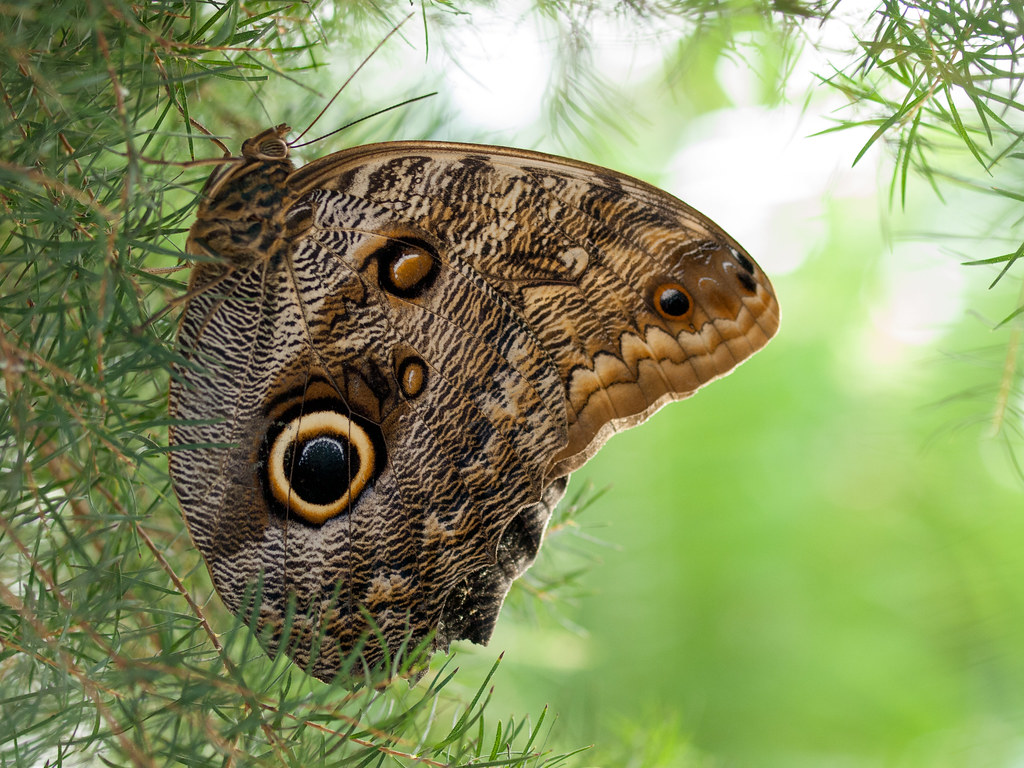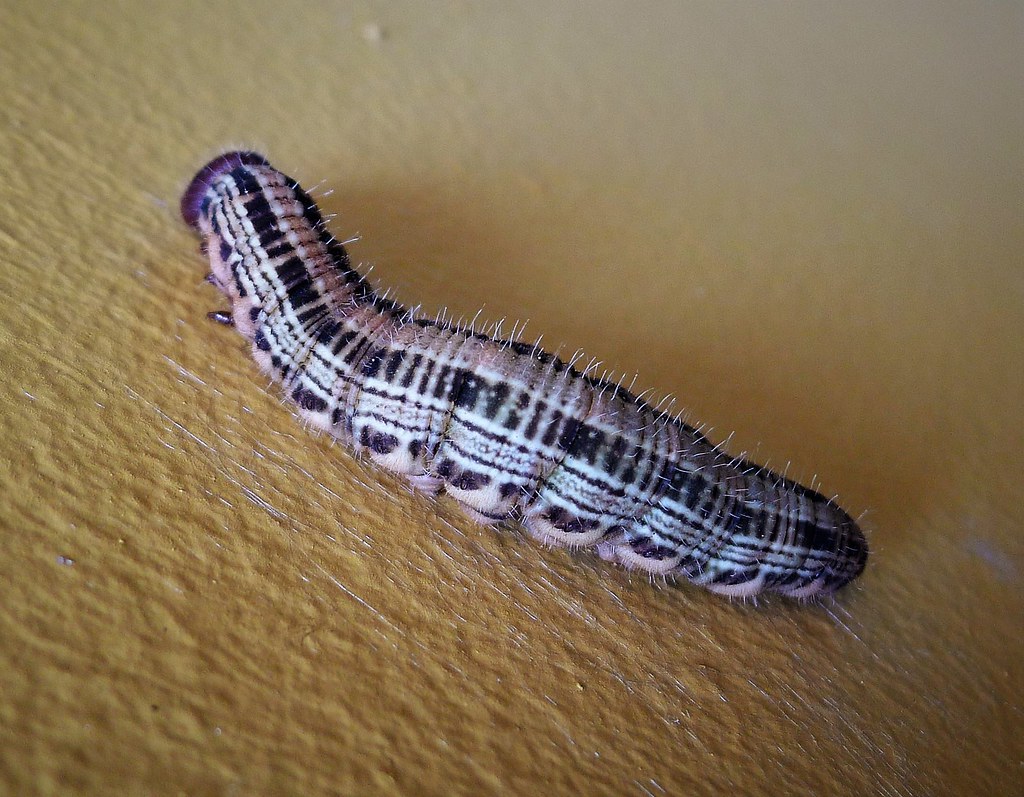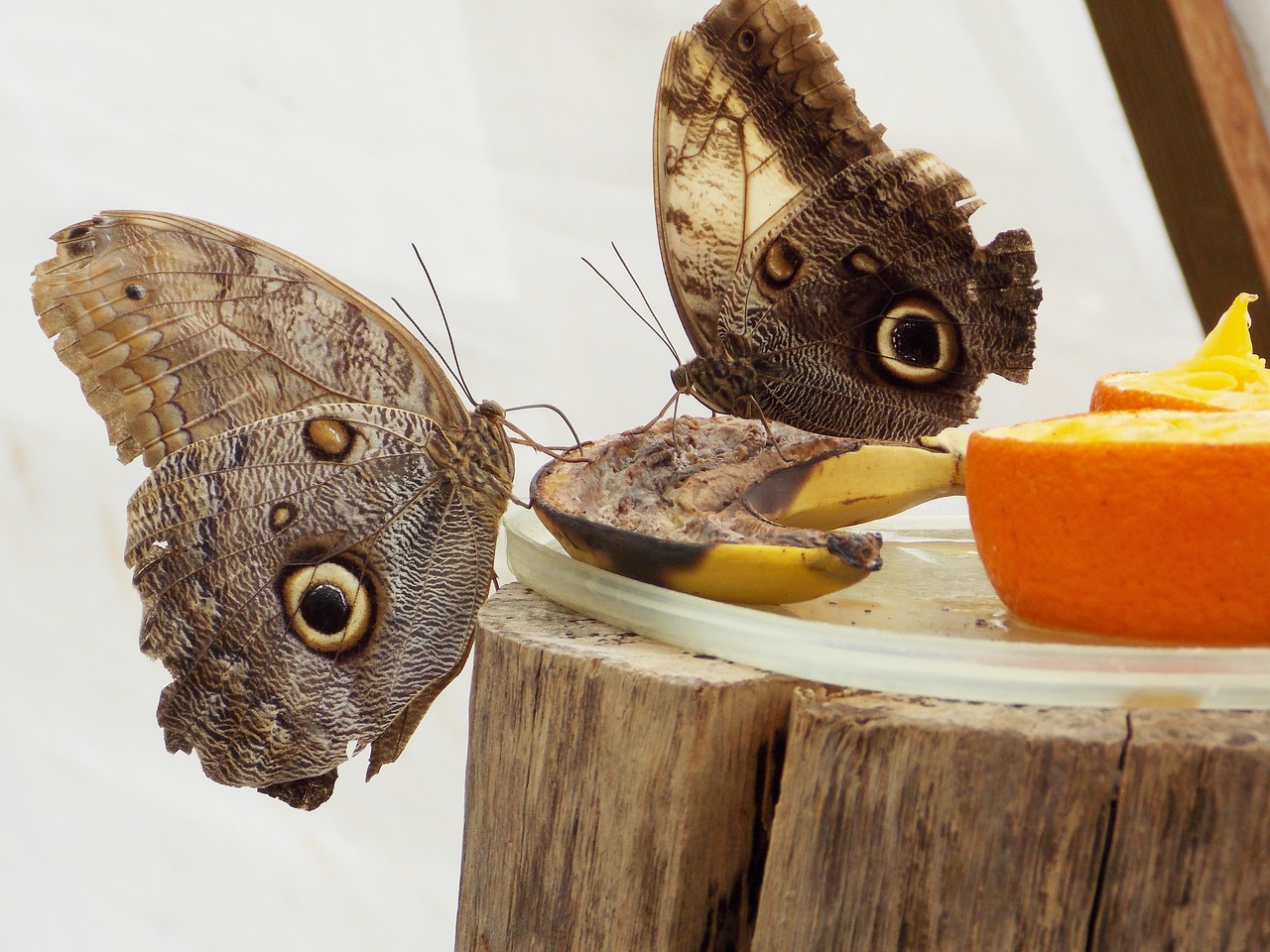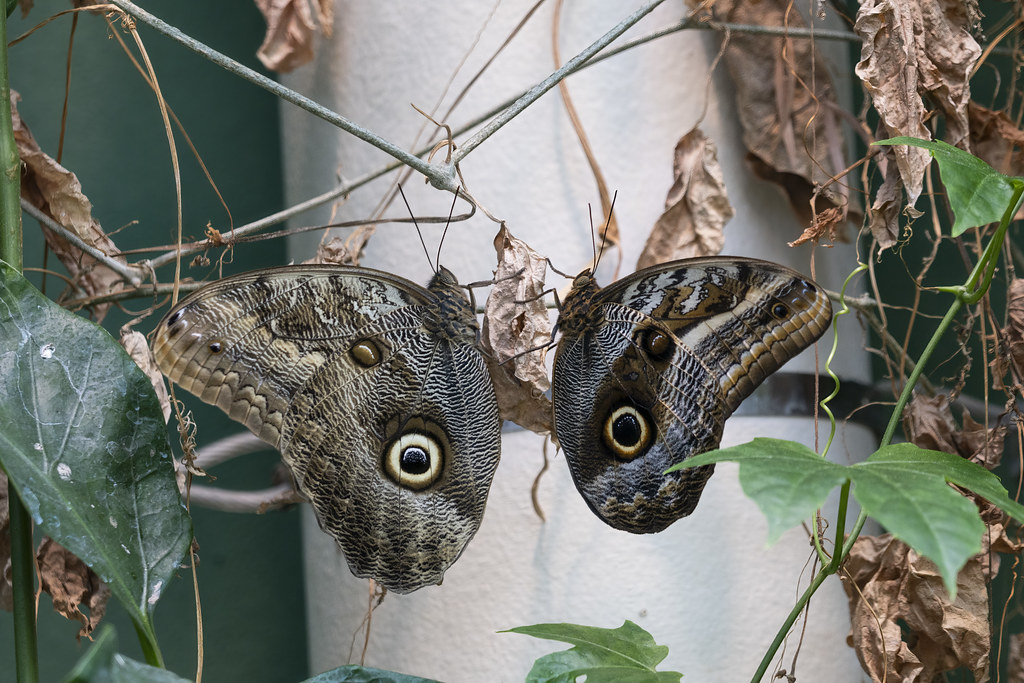Nature has countless ways to surprise us, but few creatures are as captivating as the butterfly that literally wears the eyes of its predator on its wings. Imagine walking through a tropical forest and suddenly seeing what appears to be an owl staring back at you from the delicate wings of a butterfly. This isn’t science fiction – it’s the remarkable reality of the owl butterfly, a master of deception that has evolved one of nature’s most ingenious survival strategies.
The Mesmerizing Owl Butterfly Family
The owl butterfly belongs to the genus Caligo, a group of large butterflies native to Central and South America. These remarkable insects earned their name from the striking eye-spots that adorn their wings, creating an uncanny resemblance to the piercing gaze of an owl.
There are about 20 species within the Caligo genus, each displaying variations of this extraordinary mimicry. The most famous among them is Caligo memnon, whose wing patterns are so convincing that they can startle even experienced naturalists. These butterflies typically measure between 5 to 8 inches in wingspan, making them some of the largest butterflies in the Americas.
The Art of Wing Deception

The eye-spots on owl butterfly wings aren’t just random patterns – they’re masterpieces of evolutionary engineering. Each “eye” consists of concentric circles in shades of brown, black, and sometimes blue or white, creating a three-dimensional effect that mimics the depth and intensity of a real owl’s eye.
What makes these eye-spots even more remarkable is their positioning. When the butterfly closes its wings, the eye-spots align perfectly to create the illusion of a large predator’s face. The surrounding wing patterns even mimic the texture and coloring of owl feathers, completing this incredible disguise.
Why Owls Make Perfect Models

Evolution doesn’t create random patterns – there’s always a purpose behind nature’s designs. Owls represent one of the most feared predators in the animal kingdom, particularly for small creatures that might otherwise prey on butterflies. Their large, unblinking eyes and silent flight have made them symbols of danger across countless ecosystems.
By mimicking these apex predators, owl butterflies tap into a primal fear response that exists in birds, reptiles, and mammals alike. This evolutionary strategy, known as Batesian mimicry, allows harmless creatures to benefit from the reputation of dangerous ones. It’s like wearing a superhero costume that actually gives you superpowers.
The Science Behind the Scare
When a potential predator encounters an owl butterfly, their brain processes the visual information in milliseconds. The large eye-spots trigger an immediate threat response, causing the predator to hesitate or retreat entirely. This split-second advantage often means the difference between life and death for the butterfly.
Research has shown that these eye-spots are particularly effective against birds, which rely heavily on visual cues for hunting. The sudden appearance of what appears to be a much larger predator can cause birds to abort their attack entirely. Scientists have documented cases where even experienced bird hunters have been momentarily startled by these wing patterns.
Masters of Timing and Positioning

Owl butterflies don’t just rely on their eye-spots – they’re also strategic about when and how they use them. These creatures are primarily active during dawn and dusk, periods when real owls are most likely to be hunting. This timing makes their disguise even more believable and effective.
When threatened, an owl butterfly will position itself to maximize the impact of its eye-spots. It might hang upside down from a branch, orient its wings to catch the light just right, or even perform a subtle wing flutter that makes the “eyes” appear to blink. These behaviors transform a simple visual trick into a sophisticated performance.
Hidden Beauty of the Upper Wings

While the underside of owl butterfly wings creates the famous eye-spot display, the upper surfaces tell a completely different story. These wings often showcase brilliant blues, purples, and iridescent patterns that seem to belong to an entirely different creature. The contrast between the cryptic underside and the vibrant upper wings demonstrates nature’s dual approach to survival.
During flight, these butterflies create a mesmerizing display as they alternate between their bright upper wings and their deceptive undersides. This flickering effect can confuse predators and make it difficult for them to track the butterfly’s movement. It’s like watching a magician’s trick unfold in real-time.
Life in the Rainforest Shadows

Owl butterflies inhabit the dense rainforests of Central and South America, from Mexico down to Argentina. They prefer the lower levels of the forest, where filtered sunlight creates the perfect conditions for their camouflage to work effectively. These environments provide both the food sources they need and the visual complexity that makes their mimicry more convincing.
The humid, shadowy world of the rainforest floor might seem like a challenging place to live, but owl butterflies have adapted perfectly to these conditions. Their large wings allow them to glide effortlessly through the understory, while their eye-spots provide protection in an environment filled with potential threats.
The Caterpillar’s Own Survival Strategy

Before becoming winged masters of deception, owl butterflies begin life as equally fascinating caterpillars. These larvae feed primarily on banana plants and other members of the Musaceae family, growing to impressive sizes that can reach up to 6 inches in length. Their bodies are covered in spines and bristles that provide protection from predators.
The caterpillars themselves employ different survival strategies than their adult counterparts. Rather than mimicry, they rely on their intimidating appearance and the protection of their host plants. Some species even have false eye-spots on their rear ends, creating confusion about which direction they’re facing.
Feeding Habits and Ecological Role

Adult owl butterflies have developed feeding habits that complement their secretive lifestyle. Unlike many butterfly species that visit flowers during daylight hours, owl butterflies prefer to feed on rotting fruit, tree sap, and occasionally animal dung. This diet provides them with the nutrients they need while keeping them hidden from daytime predators.
Their feeding behavior also plays an important ecological role. As they move between food sources, they help disperse seeds and contribute to forest regeneration. These butterflies serve as pollinators for certain night-blooming plants, creating connections between different parts of the ecosystem that might otherwise remain isolated.
The Mating Dance of Deception

Finding a mate presents unique challenges for creatures that specialize in looking like something else. Owl butterflies have evolved complex courtship rituals that allow them to identify potential partners while maintaining their disguises. Males often perform elaborate flight patterns and release specific pheromones that signal their identity to females.
During mating season, these butterflies must balance their need for camouflage with their desire to attract mates. They’ve developed subtle visual and chemical cues that other owl butterflies can recognize, creating a secret language that allows them to find each other without revealing themselves to predators.
Threats and Conservation Challenges

Despite their impressive defensive strategies, owl butterflies face significant threats in the modern world. Deforestation and habitat destruction have reduced their natural ranges, while climate change alters the delicate ecosystem balance they depend on. Many species that once thrived in pristine rainforests now struggle to survive in fragmented landscapes.
The loss of host plants presents another major challenge. As banana plantations replace natural forest vegetation, caterpillars lose their primary food sources. This disruption in the life cycle affects entire populations and can lead to local extinctions if not addressed through conservation efforts.
Cultural Impact and Human Fascination
Owl butterflies have captured human imagination for centuries, appearing in indigenous folklore and modern scientific literature alike. Many Central and South American cultures have developed myths and legends around these mysterious creatures, often attributing supernatural powers to their ability to transform from one appearance to another.
In contemporary times, these butterflies have become symbols of nature’s ingenuity and the importance of biodiversity conservation. Their story resonates with people worldwide, serving as a powerful example of how evolution creates solutions to survival challenges. Museums and butterfly conservatories often feature owl butterflies as star attractions, using their dramatic appearance to educate visitors about natural selection and adaptation.
Research and Scientific Discoveries
Scientists continue to study owl butterflies to understand the mechanisms behind their remarkable mimicry. Recent research has revealed that the eye-spots aren’t just visual tricks – they’re carefully engineered structures that manipulate light and shadow to create their three-dimensional effect. Advanced imaging techniques have shown how microscopic scales on the wings work together to produce these convincing patterns.
Genetic studies have also provided insights into how these patterns evolved and how they’re maintained across generations. Researchers have identified specific genes responsible for eye-spot development, opening new avenues for understanding how complex traits emerge in nature. This research has applications beyond butterfly biology, contributing to our understanding of pattern formation and evolutionary development.
The Future of These Winged Illusionists
The survival of owl butterflies depends on our commitment to preserving their rainforest habitats and understanding their ecological needs. Conservation efforts are underway in many countries, focusing on protecting critical breeding areas and maintaining corridors between fragmented forests. These initiatives recognize that saving owl butterflies means saving entire ecosystems.
Climate change poses new challenges that will require adaptive conservation strategies. As temperatures and rainfall patterns shift, the delicate balance between owl butterflies and their environment may be disrupted. Scientists are working to understand how these changes might affect butterfly populations and what steps can be taken to help them adapt.
The owl butterfly stands as one of nature’s most remarkable examples of evolutionary creativity, proving that sometimes the best defense is a good disguise. These winged illusionists have spent millions of years perfecting their craft, developing eye-spots so convincing that they can fool both predators and humans alike. Their story reminds us that survival in nature often depends not on strength or speed, but on the ability to be something you’re not. As we continue to explore and understand these fascinating creatures, we gain deeper appreciation for the intricate web of relationships that make our natural world so extraordinary. What other secrets might be hiding in plain sight, waiting for us to discover their ingenious solutions to life’s greatest challenges?

